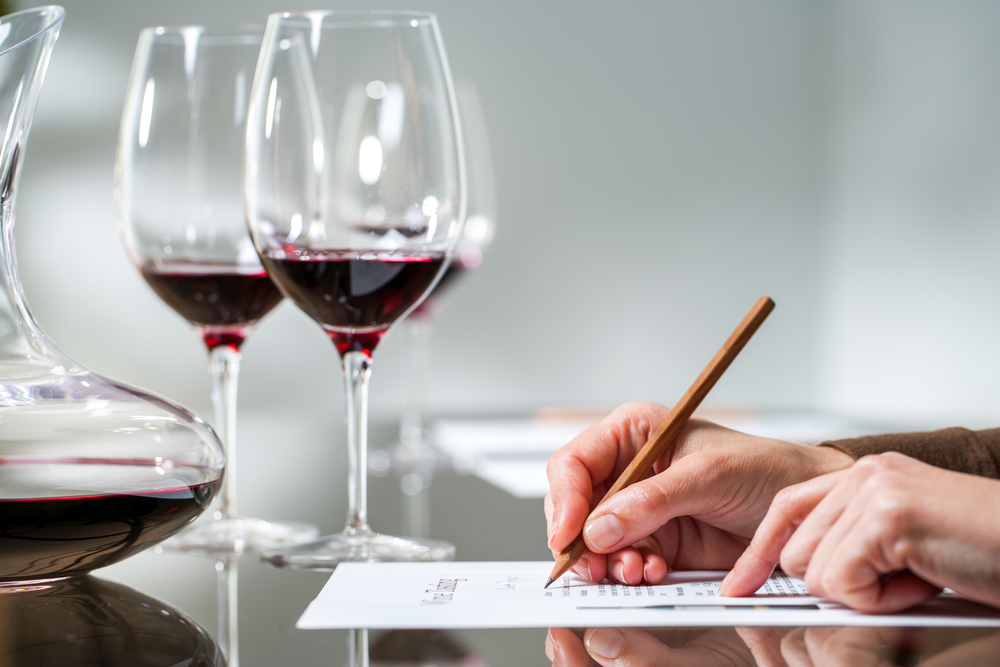Blind tasting sessions are an excellent way to simultaneously expand your wine palate while improving your tasting skills. By removing any preconceptions, you can concentrate on looking for the similarities and differences between wines, as well as learn which grapes, regions, and styles you prefer. Read on to explore a few blind wine tasting tips.
Planning a Blind Tasting
Once you choose a time and location for your blind tasting, it’s a good idea to decide who will be providing the wines. Requesting that tasters contribute wines (yourself included) is an easy way to assemble a diverse and unpredictable selection of bottles. Consider setting some parameters such as:
- The number of bottles everyone should bring
- A price range
- A theme (e.g., wine color, grapes, growing regions, styles, vintages, bottle age)
Also, be sure to have the following items:
- Stemware
- Corkscrews
- An osso
- A decanter
- A spittoon
- Paper and pens to take notes
- Water
- Crackers

Keeping the Identity of Wine a Secret
The easiest way to prevent others from seeing wine labels is to place each bottle in a bag before service. Bags can be made of any material but should be opaque. Designate a staging area to allow for additional preparations, like discreetly removing the capsules and corks from each bottle. This is also a good place to decant bottles if necessary.
Organizing the Tasting
Agree upon an order in which to offer the wines. Numbering the bags will help you keep track of them. Then, decide whether you’d like to serve the wines in flights or just one bottle at a time. Flights give you the advantage of comparing multiple wines side by side, while single bottles may allow for more critical observations. After setting your guidelines, commence with the tasting.
During the Tasting
Elect someone to pour each wine or carefully pass the bagged bottles around the table. Once everyone has a wine in their glass, ask the following questions:
What does the wine look like?

- Clarity: clear, hazy, or has particles
- Intensity: pale, medium, or deep
- Legs: thick (more alcohol) or thin (less alcohol)
- Sparkling: size of bubbles, persistence of streams
How does the wine smell and taste?

- Intensity: light, medium, or pronounced
- Age: young, old, or in between
- Sweetness level: dry, off-dry, or sweet
- Acidity: low, medium, or high
- Tannins: low, medium, or high
- Body: light, medium, or full
- Finish: short, medium, or long
- Additional qualities: textures, balance, ripeness
What’s the quality and possible identity of the wine?

The Results
Once everyone has had enough time to form an opinion, feel free to discuss and defend your conclusions. Finally, reveal the mystery wine to see who correctly guessed, and taste again if you want. A good blind tasting will usually have some surprises, which provide opportunities to learn. As you taste more and more this way, you can work on recognizing patterns shared between similar wines. Take detailed notes to help hone your powers of perception. After you practice and become more comfortable with blind tasting, it wouldn’t hurt to throw a ringer (a wine that falls outside the set parameters) into the mix every now and then to keep tasters on their toes.
Like other things in life, the more you follow these blind wine tasting tips, the better you’ll become. Eventually, you should be able to spot a Margaux from a Rutherford Cabernet Sauvignon in no time at all. Good luck and happy tasting!



